Product Review | Noco Switch Mode Multistage charger 3.5 Amp G-3500
Posted on January 31, 2011
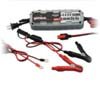 The G-3500 Smart Charger by Noco is a 3.5 Amp battery charger designed to charge and maintain medium batteries. This is a perfect charger for cars, SUVs, boats and trucks. Noco uses true Switch mode technology in this super efficient line of chargers. This charger has a noise factor of 150mV, less than 50db. This charger is a true multistage, microprocessor controlled charger that will not overcharge your batteries ever. Also incorporated in this unit is the ability to adjust to low voltage input, which could happen if running it off of a generator or a very long extension chord. read more...
The G-3500 Smart Charger by Noco is a 3.5 Amp battery charger designed to charge and maintain medium batteries. This is a perfect charger for cars, SUVs, boats and trucks. Noco uses true Switch mode technology in this super efficient line of chargers. This charger has a noise factor of 150mV, less than 50db. This charger is a true multistage, microprocessor controlled charger that will not overcharge your batteries ever. Also incorporated in this unit is the ability to adjust to low voltage input, which could happen if running it off of a generator or a very long extension chord. read more...News Update | New Warehouse for BatteryStuff.com
Posted on January 25, 2011
 Well, we’ve finally done it. BatteryStuff.com has outgrown our current location and has secured a newer, larger warehouse that will better accommodate all our operations. This larger facility will allow better access for our local customers with a new full service showroom that will make regional pickup and purchasing easier for any walk in traffic. The increase in our warehouse space will allow for more products to be stocked and even added to our already great product lineup. read more...
Well, we’ve finally done it. BatteryStuff.com has outgrown our current location and has secured a newer, larger warehouse that will better accommodate all our operations. This larger facility will allow better access for our local customers with a new full service showroom that will make regional pickup and purchasing easier for any walk in traffic. The increase in our warehouse space will allow for more products to be stocked and even added to our already great product lineup. read more...Battery Myth | Will a Small Charger Maintain a Large Bank of Batteries?
Posted on January 17, 2011
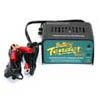 Quick answer: No. When you are dealing with a bank of batteries that is collectively larger than a car battery (max 100 amp/hours), you should crunch the numbers to find the ideal charger for your situation. Normal, static power drain on a brand new battery can be as high as 2-3% a month, which in the case of a 1000 amp battery pack(total)would translate to roughly 30 amps. Assuming the batteries are hooked up to something, it would be fair to double that. If your batteries are not new, the drain will likely be even more. So triple that number. If we assume a total 10% monthly drain, in this case 100 amps, you can see that you are tasking a small battery charger to recharge the same amount of power normally reserved for a larger charger. read more...
Quick answer: No. When you are dealing with a bank of batteries that is collectively larger than a car battery (max 100 amp/hours), you should crunch the numbers to find the ideal charger for your situation. Normal, static power drain on a brand new battery can be as high as 2-3% a month, which in the case of a 1000 amp battery pack(total)would translate to roughly 30 amps. Assuming the batteries are hooked up to something, it would be fair to double that. If your batteries are not new, the drain will likely be even more. So triple that number. If we assume a total 10% monthly drain, in this case 100 amps, you can see that you are tasking a small battery charger to recharge the same amount of power normally reserved for a larger charger. read more...Written Tutorial | Lithium Iron Phosphate Battery FAQ
Posted on January 10, 2011
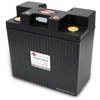 What makes Shorai Lithium Iron Phosphate batteries different from other batteries?
What makes Shorai Lithium Iron Phosphate batteries different from other batteries?
A. Shorai LFX batteries contain proprietary eXtreme-Rate Lithium Iron prismatic cells (chemistry LiFePO4). Shorai LFX batteries contain no poisonous lead, no acid, and do not create gasses during charge, as traditional Lead-Acid batteries do. Compared to lead-acid, Shorai LFX lithium are also extremely light, have much lower self-discharge, do not sulfate, and are environmentally friendly. While there are other companies now offering Lithium-Iron based powersports batteries, all except Shorai use cylindrical cells originally made for power tool applications. Such cells are inferior to Shorai Prismatic LFX, for several reasons. read more...
Battery Myth | How Often Should I Charge My Motorcycle, ATV or Boat Battery?
Posted on January 6, 2011
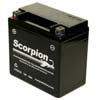 Any type of lead acid battery should always be left in a fully charged condition. Having done that, you should either charge your battery every 30 days or so, or consider getting a smart charger to maintain your battery all the time. These new ‘smart’ chargers will hold the voltage at its prime voltage, while reducing the current to almost nil, thus preventing overcharge even when left on for months at a time. A battery will self discharge over time, even while not in use or connected to anything, thus the benefit of constant maintenance charger. read more...
Any type of lead acid battery should always be left in a fully charged condition. Having done that, you should either charge your battery every 30 days or so, or consider getting a smart charger to maintain your battery all the time. These new ‘smart’ chargers will hold the voltage at its prime voltage, while reducing the current to almost nil, thus preventing overcharge even when left on for months at a time. A battery will self discharge over time, even while not in use or connected to anything, thus the benefit of constant maintenance charger. read more...Written Tutorial | Lubrication Tutorial
Posted on January 3, 2011
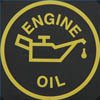 /images/tutorial_lube.gifThere are a lot of options available when it comes to lubricants. We have mineral based (oil that comes from the ground), blends, a combination of mineral and synthetic, and full synthetic. We use these lubricants in engines, transmissions, gear cases, and hydraulics.
/images/tutorial_lube.gifThere are a lot of options available when it comes to lubricants. We have mineral based (oil that comes from the ground), blends, a combination of mineral and synthetic, and full synthetic. We use these lubricants in engines, transmissions, gear cases, and hydraulics.
Mineral based oils are the minimum standard products to get us through a warranty period. A great deal of additives must be used in these lubricants to meet the requirements mandated by vehicle and equipment manufactures. With warranties getting longer, lubricants have to be improved. read more...


